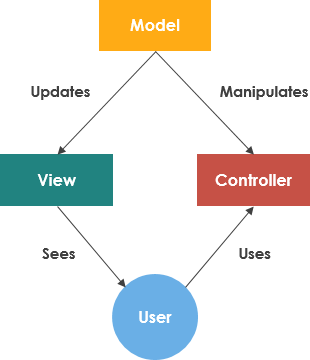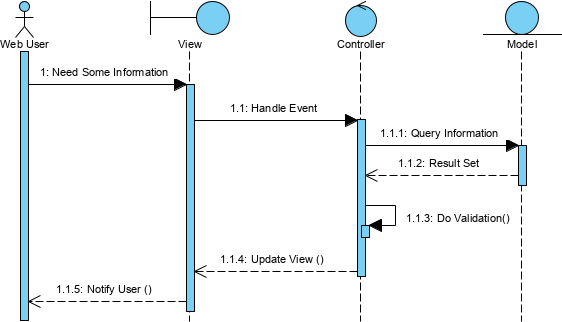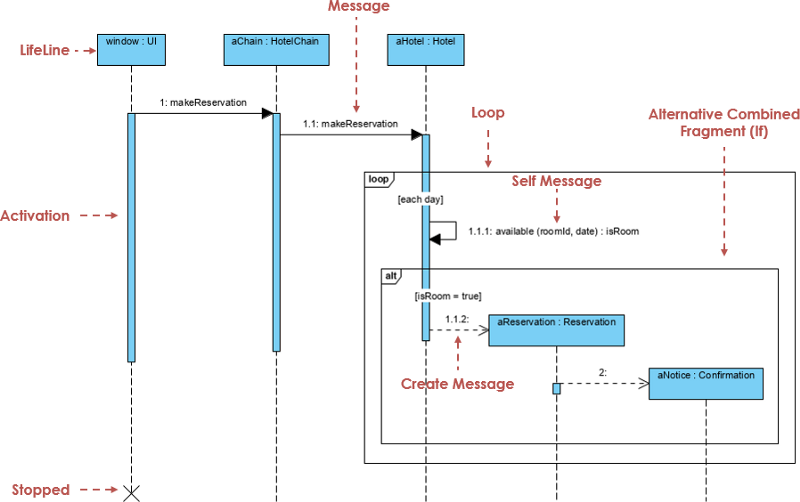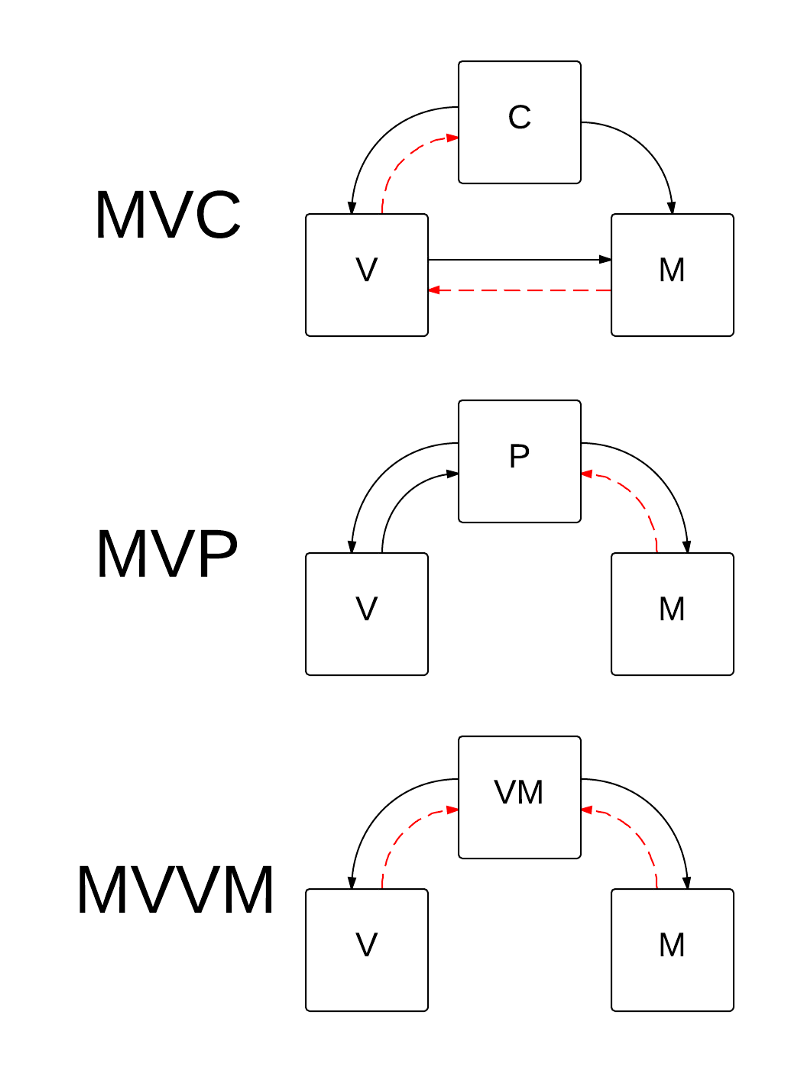Jak to przedstawić za pomocą diagramu sekwencji UML?
MVC (znany jako Model-Widok-Kontroler) to wzorzec w projektowaniu oprogramowania, który jest powszechnie stosowany do implementacji interfejsów użytkownika, danych i logiki sterującej. Podkreśla on rozdzielenie między logiką biznesową a prezentacją oprogramowania. To „rozdzielenie zadań” zapewnia lepszy podział pracy i lepszą konserwację.
Trzy części MVC
Trzy częściwzorzec projektowy MVCmożna opisać w następujący sposób:
- Model: Zarządza danymi i logiką biznesową. Model jest odpowiedzialny za zarządzanie danymi aplikacji. Otrzymuje dane wejściowe od kontrolera.
- Widok: Obsługuje układ i wyświetlanie. Widok renderuje prezentację modelu w określonym formacie.
- Kontroler: kieruje poleceniami do części modelu i widoku. Kontroler odpowiada na dane wejściowe użytkownika i wykonuje interakcję z obiektem modelu danych. Kontroler otrzymuje dane wejściowe, opcjonalnie je waliduje, a następnie przekazuje je do modelu.

Na przykład, nasza lista zakupów może mieć formularze wejściowe i przyciski, które pozwalają nam dodawać lub usuwać przedmioty. Te operacje muszą zaktualizować model, więc dane wejściowe są wysyłane do kontrolera, następnie kontroler manipuluje modelem w razie potrzeby, a następnie kontroler wysyła zaktualizowane dane do widoku.
Jednak możesz chcieć tylko zaktualizować widok, aby wyświetlić dane w innym formacie, na przykład zmieniając kolejność przedmiotów na alfabetyczną, lub zmieniając najniższą cenę na najwyższą. W takim przypadku kontroler może zająć się tym problemem bezpośrednio, nie aktualizując modelu.
Zastosowanie MVC w rozwoju oprogramowania
Framework MVC był szeroko stosowany przez wielu programistów oprogramowania, a także inne frameworki i biblioteki oprogramowania. Tradycyjnie używany do desktopowych graficznych interfejsów użytkownika (GUI), ten wzorzec stał się popularny w projektowaniu aplikacji internetowych.
Popularne języki programowania mają frameworki MVC, aby ułatwić implementację wzorców, takie jak JavaScript, Python, Ruby, PHP, Java i C#, które mają frameworki MVC, które można bezpośrednio wykorzystać do rozwoju aplikacji internetowych.
Jak to przedstawić za pomocą diagramu sekwencji UML?
Na poniższym ogólnym diagramie sekwencji MVC widać, że obiekt widoku jest odpowiedzialny za dane wejściowe i wyjściowe użytkownika, to znaczy, że okno dialogowe jest dobrym przykładem widoku. Obiekt kontrolera implementuje logikę, która pozwala na wykonywanie transakcji na modelu. Obiekty modelu enkapsulują szczegółową logikę biznesową i dane.

Przykład diagramu sekwencji MVC: Fragment rezerwacji hotelowej
Ten przykład diagramu sekwencji pokazuje, jak można dokonywać rezerwacji hotelowych. Ten diagram sekwencji uchwyca zachowanie pojedynczego scenariusza rezerwacji hotelowej, pokazując szereg przykładowych obiektów i wiadomości, które są przekazywane między tymi obiektami, jak pokazano na diagramie poniżej:

Powiązany framework MVC
Niektóre inne wzorce projektowe opierają się na MVC, takie jak MVVM (Model Widok Model), MVP (Model widok Demonstrujący) i MVW (Model widok)

- Model procesu oprogramowania
- Czym jest model procesu oprogramowania?
- Planowanie adaptacyjne vs przewidywalne: Kiedy Agile? Kiedy Waterfall?
- Czym jest cykl życia rozwoju oprogramowania?
Zbieranie wymagań
Rozwój
Czym jest REST API?
Code First vs Design First w podejściu API
Praktyczny przewodnik po inżynierii kodu
Czym jest architektura zorientowana na usługi (SOA)?
– Framework Swagger vs API Blueprint i narzędzia automatyczne
Podejście API-First z frameworkiem Swagger
Ten post dostępny jest również w Deutsch, English, Español, فارسی, Français, Bahasa Indonesia, 日本語, Portuguese, Ру́сский, Việt Nam, 简体中文 and 繁體中文













